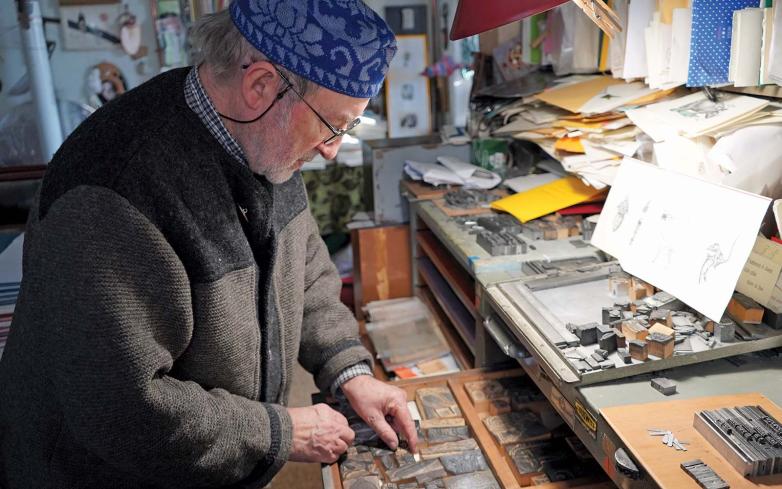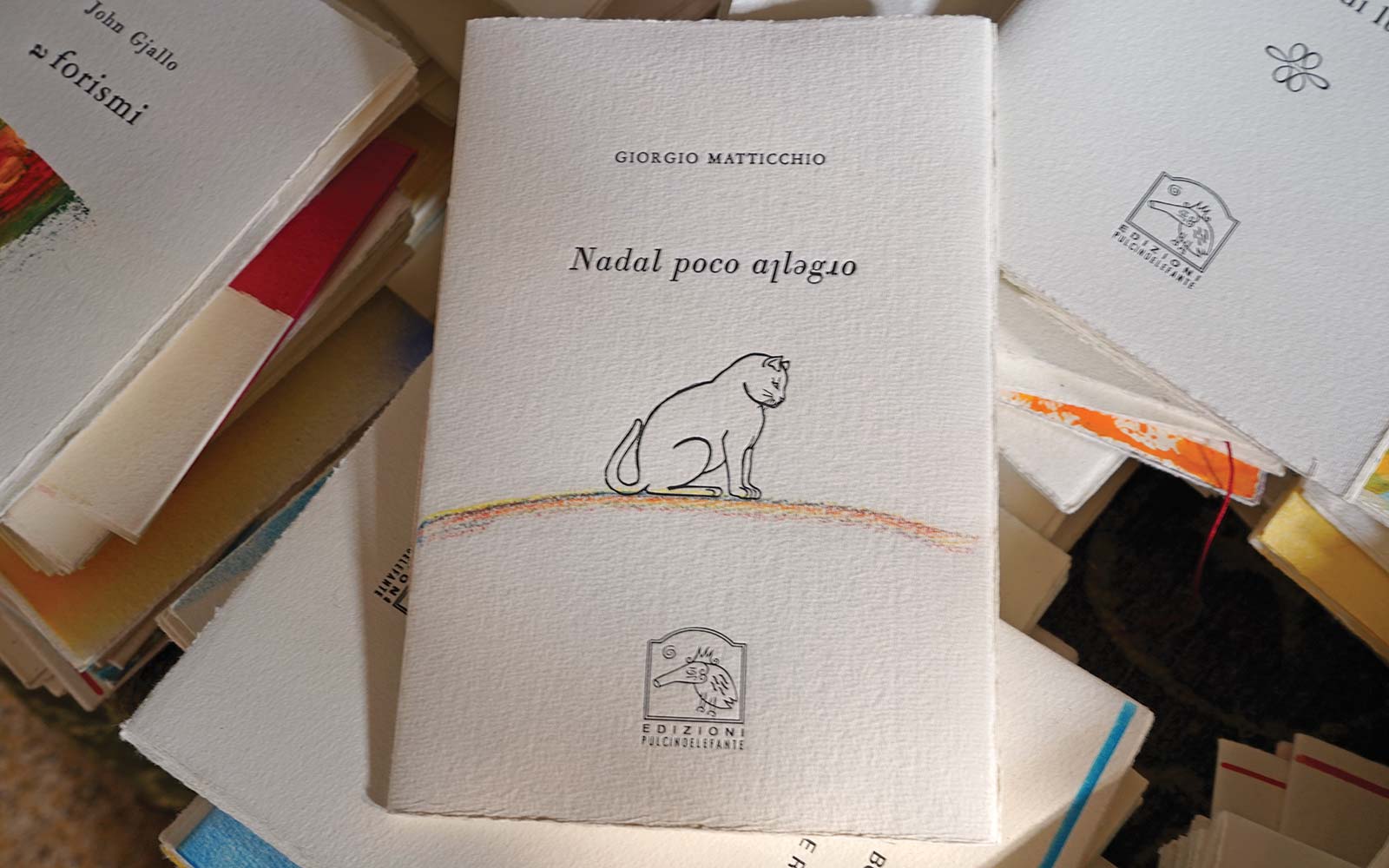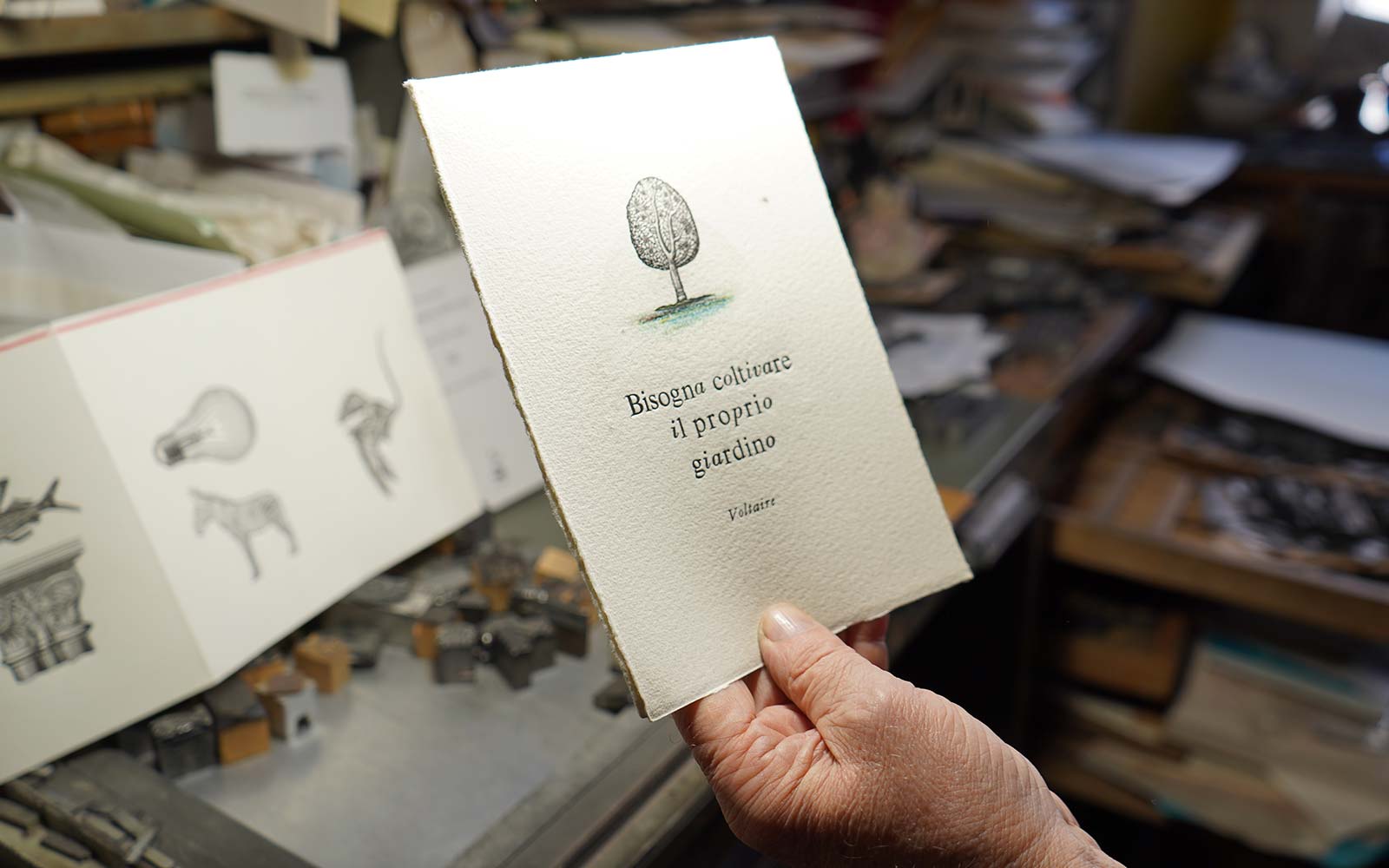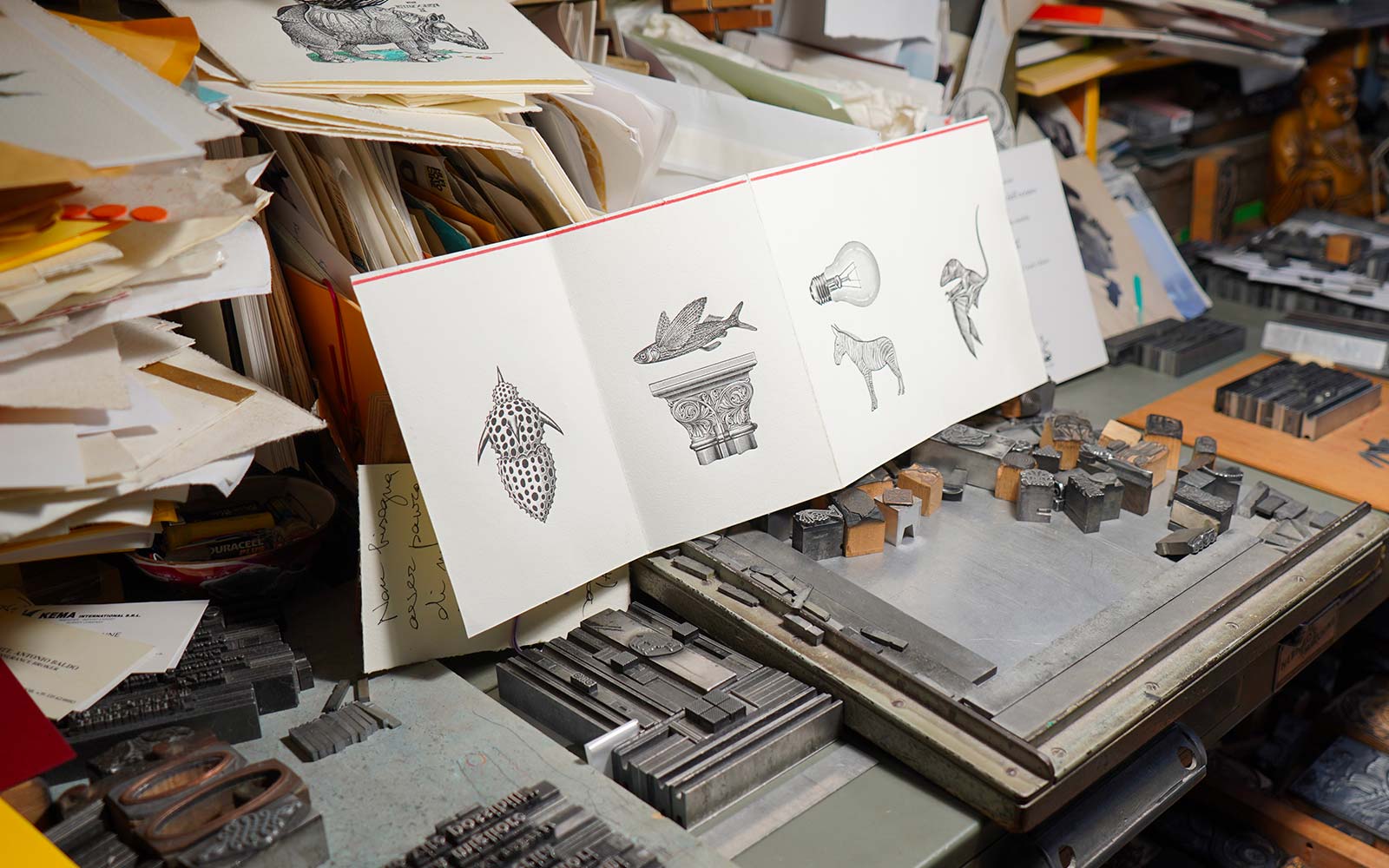His workshop is in Osnago, a tiny Italian town in the countryside between Milan and Lake Como. Pulcinoelefante’s eclectic catalogue includes poems from various authors, both famous and less known, short texts, and aphorisms—including the ones Casiraghy has been writing for 50 years. He has also crafted books for many of Italy’s leading authors and artists.
His interest in creative freedom also translates into the originality of the books. “It is a sophisticated game,” Casiraghy said while opening his drawers full of neatly organized typefaces. The beauty of his books also originates from the relationship between typeface, content, and decoration.
He keeps a collection of woodcut matrices and clichés—printing plates used in letterpress—depicting objects, animals, and fantastic beasts that are reminiscent of a medieval bestiary. He likes to mix this imagery with typeforms and overlap them with different woodcuts during the printing process to create “evocative alchemies.” Sometimes Casiraghy mixes different fonts together, Roman and italics, to create artistic effects.
The books are often enriched by Casiraghy’s drawings. From a pocket, he pulled out a colored pencil and sketched a flower on a book he was working on. “See how it changes from just black and white to color?” He often also adds odd materials: books with some quotes from C. G. Jung have been decorated with a small mirror, others with watercolors, collage, and materials of various textures depending on the content.
The name Pulcinoelefante (chick-elephant) is itself part of the joyous and surreal universe of Casiraghy: a small chick with an elephant head. “I drew it as a child. It is an oxymoron. As I got older, I made a cliché and I have been using it for 40 years.”



















